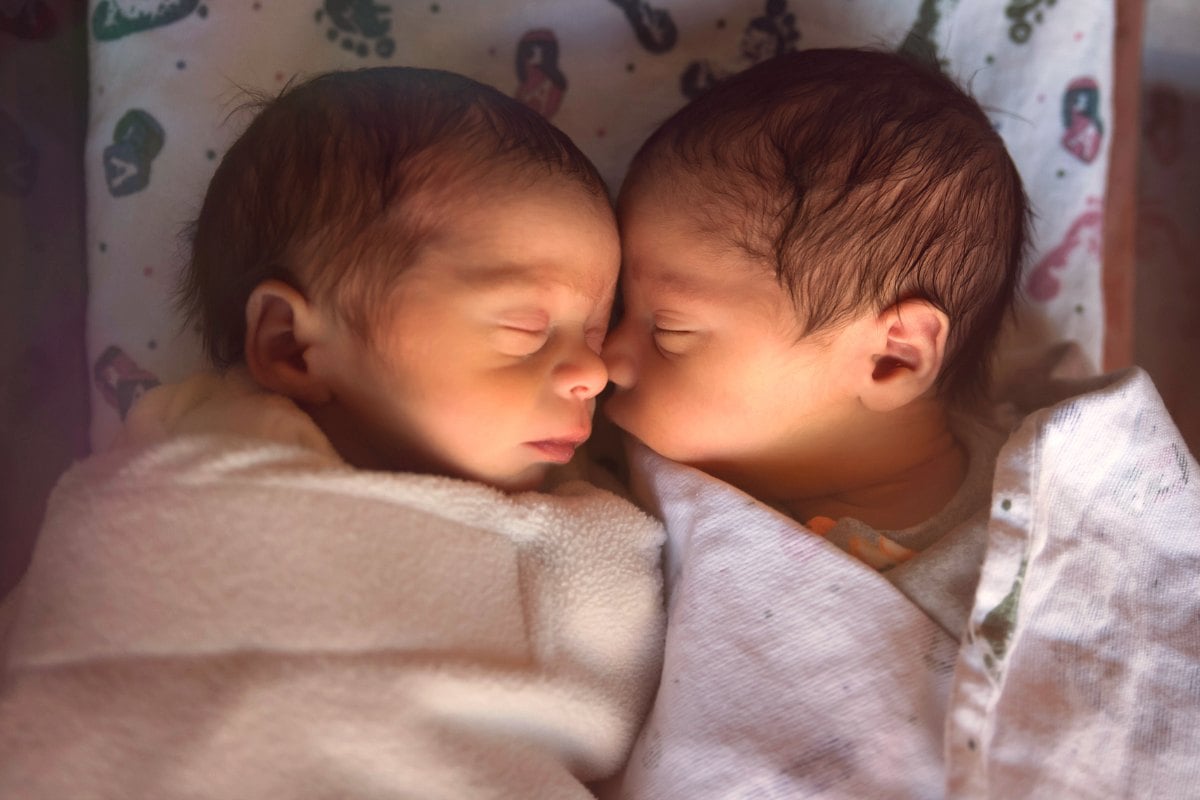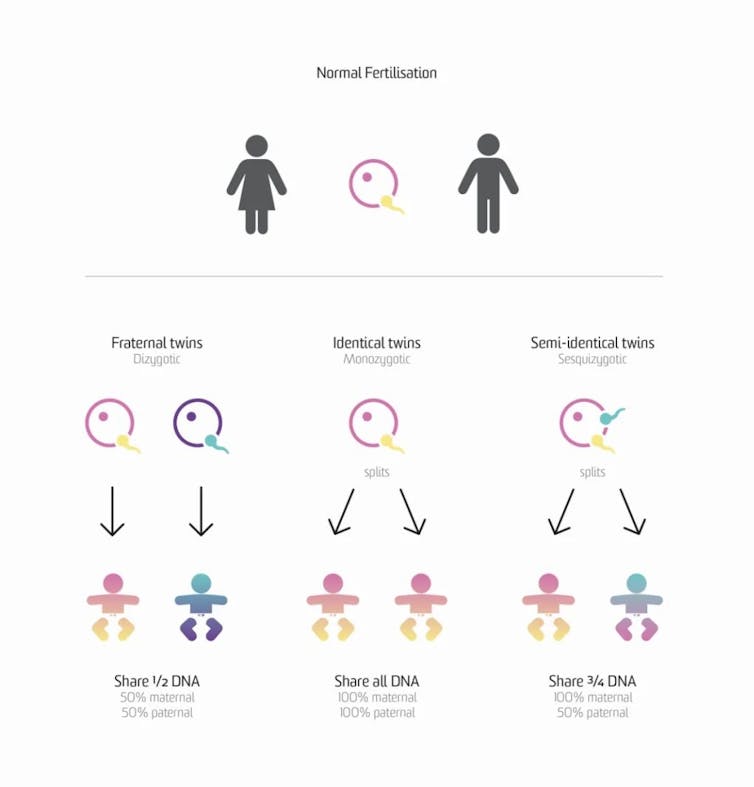
Hannah Brown, South Australian Health & Medical Research Institute
We all know a set of twins; perhaps even a set of identical twins. In Australia, twins account for about one in 80 births.
But in research from the University of New South Wales and the Queensland University of Technology published today in the New England Journal of Medicine, we learn of a very unique set of Australian twins.
A boy and a girl from Brisbane, aged four, have been identified as only the second set of semi-identical, or sesquizygotic twins, in the world. They are the first to have been observed in utero (in the womb).
This extremely rare phenomena is the result of two sperm fertilising the same egg.
Six TV sisters we absolutely love to watch:
How do twins occur?
The most common type of twins are non-identical twins, which can be the same or different sexes. Non-identical twins are also known as fraternal twins or dizygotic twins (from two zygotes, what we call the earliest embryo when the egg and sperm fuse).
This type of twinning occurs when more than one egg is released from the ovary at ovulation (normally just a single egg is selected and released), and both of the eggs are fertilised by different sperm. These twins are no more genetically similar than siblings born years apart.

